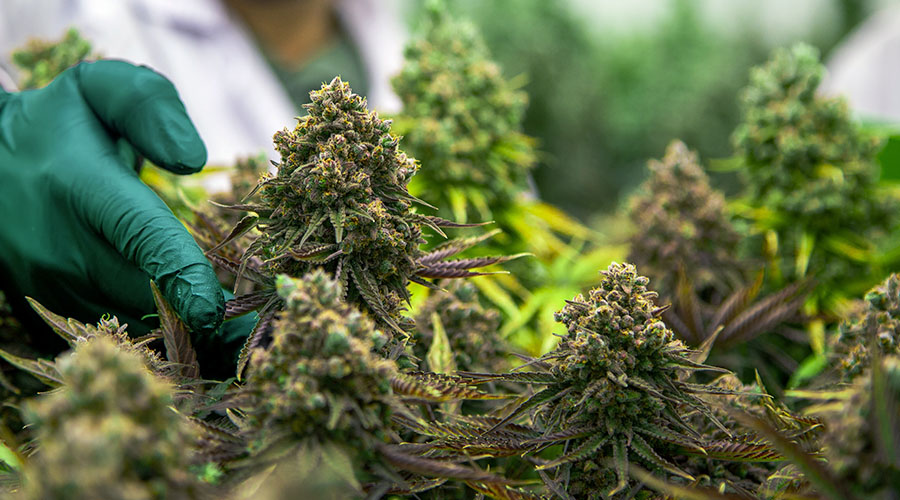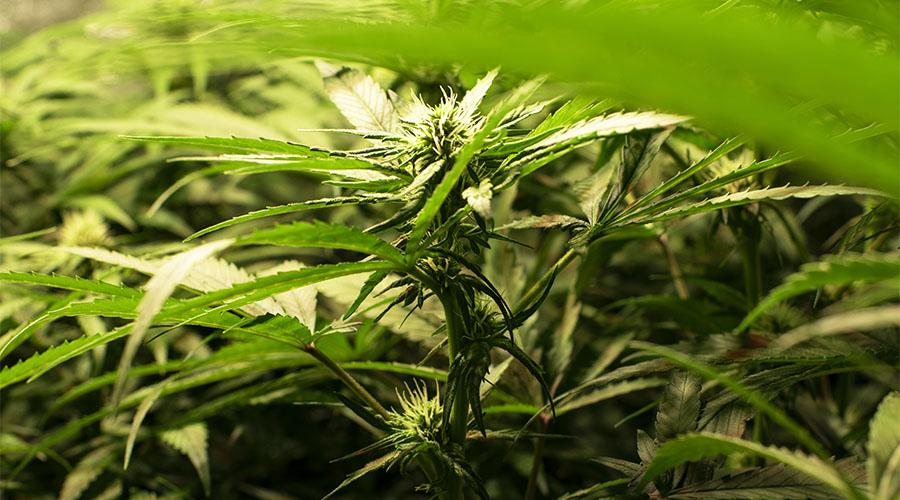When you’re growing marijuana, whether indoors or outdoors, the hope is that your plants have a smooth growth cycle. However, on occasion, you might find that they’re growing more slowly than anticipated. Rather than panicking, read this detailed guide that outlines different reasons for slow growth, along with tips to rectify the situation.
Genetics
Everything begins with the seeds. If you happen to use old or low-quality seeds, you’re setting yourself up for a world of issues. First and foremost, old seeds take longer to germinate and also grow more slowly than normal.
You must find seeds from cannabis strains with good genetics. Check out the WayofLeaf cannabis strain review section to find out whether a particular strain is hard or easy to grow. We have hundreds of reviews divided into handy categories, making it simple for you to browse.
Whether you like it or not, some marijuana strains are faster to germinate and grow more quickly than others. It’s also an unfortunate fact that sometimes you can do everything right but end up with a couple of slow-growing plants.

That said, you can greatly help your cause by purchasing from a high-quality seed bank. Reputable sellers usually have important information about their strains, including flowering period duration.
Once you have the seeds in your possession, put them in a jar of water. The seeds that sink have a high probability of germinating, whereas the ones that float probably won’t. Leave the seeds in the water for a couple of hours, and dump whatever remains floating at that stage.
The Root of the Problem
Assuming you’re using a traditional growing setup (not hydroponics or aeroponics), the plant’s roots will remain out of sight. However, their health is essential to plant growth. If there are problems with the roots, plant issues are inevitable. Here are a couple of potential reasons why problems with roots may arise.
The Pot Is Too Small
One common mistake made by novice marijuana growers is a failure to transfer their plants to bigger pots once they reach a certain size. If the pot is too small, a plant’s roots no longer have enough room to grow. At that stage, the plant becomes root-bound.
This means the roots have wrapped around the pot’s edges. When this happens, the plant will show symptoms such as drooping leaves, which are also associated with overwatering and nutrient deficiencies. Thus, you must ensure that the roots of your marijuana plants have enough room to grow by using the correct-sized container. When the time comes, transfer your plants to a bigger pot, making sure you avoid touching the roots.
Watering
In some ways, it’s understandable for someone to accidentally overwater their cannabis plants. After all, your goal is to give them as much care as possible. Alas, doing this only stunts plant growth, leading to symptoms such as drooping leaves. You also ensure that your plants become more susceptible to disease.
Underwatering happens far less often, but is arguably even worse than overwatering. Whenever there’s a lack of water in the growing medium, your plant will begin to look fragile. Apart from growing more slowly, your plants may also turn a much darker shade of green.
Avoid the above by only watering when slightly over half the growing medium is dry rather than relying on a fixed schedule. You also need to ensure that the growing medium is draining well. If you see thick, muddy soil even though you’re watering sensibly, it could be a sign of poor drainage.
Growing Environment
The temperature and humidity of your grow room play a huge role in how fast or slowly your plants grow. Cannabis prefers a warm climate with a moderate level of humidity. Thus, when you grow marijuana indoors, you need to ensure that your plants have specific conditions in which they can thrive.
Temperature
You should aim for temperatures between 68 and 80 degrees Fahrenheit during the vegetative stage and between 68 and 75 degrees during flowering. Overall, make sure your grow room’s temperature doesn’t exceed 85 degrees, nor should it fall below 60 degrees. Also, try to ensure that the temperature at night is 8-10 degrees lower than during the day.
Humidity
The absolute maximum relative humidity (RH) that your plants should be exposed to is 70% during the vegetative stage. You need to gradually lower the RH as your plants grow. By the time they enter the flowering stage, the RH should be no more than 50%. However, by the same token, it should not fall below 35% at any stage.
You’ll find it much easier to gauge the temperature and humidity of your grow room by purchasing a thermometer/hygrometer. In general, excessively high temperatures are the biggest issue for growers. Invest in fans to reduce the temperature of the grow room. As far as humidity is concerned, avoid overwatering your plants and invest in a dehumidifier if the RH is climbing too high.
Lighting
If your marijuana plants are growing slowly, the type and intensity of lighting you use could be the root cause. Growers often don’t use enough light, which means their plants don’t receive enough to enter photosynthesis, resulting in stunted growth. If seedlings are stretching excessively, it’s a sure sign that your grow room lacks adequate light.
The obvious solution here is to invest in better lighting. LED lighting, for instance, is relatively expensive but essential for serious growers.
On the other hand, there’s a danger of overdoing it, which can lead to heat stress and leaf burn. You can check for yourself by holding your hand under the light for 30 seconds. Make sure your hand is the same distance from the light as your plants. If it feels too hot for your skin, it is certainly too hot for your marijuana plants.
If you’re using LEDs, keep them between 60cm and 100cm from your plants’ canopy. If you’re using weaker lighting, 30cm is often enough.
Light Spectrum
There’s a lot more to lighting than meets the eye—literally! The rate of marijuana plant growth depends on whether they’re exposed to the right light spectrum. For this measurement, we use photosynthetically available radiation (PAR), which is measured in nanometers (nm).
During the vegetative stage, your plants prefer light that’s within the blue spectrum (between 400 and 500nm). During the flowering period, your plants thrive in the red spectrum (between 620 and 780nm).
The Light Cycle Could Be Interrupted
You also need to ensure that your plants’ light cycle isn’t interrupted. Photoperiod marijuana requires a dark cycle to move from the vegetative period to the flowering stage. You can achieve this by ensuring there are 12 hours of light followed by 12 hours of complete darkness.

However, it’s essential to keep your plants on the right lighting schedule. Interruptions could lead to a hormone imbalance that plays havoc with their internal clocks. For example, they could regress to the vegetative stage, which would massively reduce yields. So, make sure there are no light leaks, such as holes in a grow tent or even red light from a camera, during the designated period of darkness.
Stress
There are many ways that your plants can be exposed to stress. In each case, they spend vital energy recovering from damage or defending themselves, which results in slower growth. Let’s look at a couple of ways your plants can be unduly stressed.
Pests
Pests such as whiteflies and red spider mites feed on your plants, damaging them and stunting their growth. If you spot a pest infestation, you must act fast to prevent it from getting out of hand.
Avoid using chemical pesticides and insecticides, as this will damage the quality of the bud. Instead, use a spray containing natural ingredients such as neem oil. You can also add beneficial insects to your cannabis garden to deal with pests and prevent others from becoming a problem. Also, regularly check your plants for signs of pests, particularly beneath the leaves.
Plant Training
You can use techniques such as low-stress training (LST) and high-stress training (HST) to boost plant growth. However, if you do things wrong, your efforts can have the opposite effect.
Although LST is supposed to be gentle, it will still cause a certain degree of stress. As such, your plants need a few days to recover. Also, please ensure that you don’t perform LST close to the time when your plants move from the vegetative period to the flowering one.
HST techniques are riskier because, as the name suggests, they cause a significant degree of plant stress. You should only consider HST when you’re confident that the plants are healthy. Providing optimal growing conditions to help speed up your plant’s recovery time is also essential.
Nutrients
Many growers may not realize that the nutrients in the commercial potting mixes they buy at the store last only a relatively short time. So, they need to add more when the time is right.
Your marijuana plants require a specific blend of micronutrients and macronutrients to thrive. The latter include nitrogen, potassium, and phosphorus (NPK), calcium, and magnesium. The former include copper, iron, zinc, and manganese.
One possible reason your plants aren’t getting enough nutrients is that the pH level of the growing medium is not in the right range. Marijuana plants intake nutrients most efficiently when the pH of the growing medium is between 6.0 and 6.8. For plants grown in a hydroponic setup, the pH should be between 5.5 and 6.5.
Occasionally, you may overfeed your plants. In this case, nutrient lockout occurs, resulting in slower marijuana plant growth. If this happens, reduce nutrient feeding immediately. If things are serious, you may have to perform a growing medium flush to remove the excess nutrients.
Stay Sensible to Speed Up Marijuana Plant Growth
If you’re a first-time grower, the amount of work involved may seem daunting. However, as you gain practical experience, you’ll discover that growing marijuana isn’t quite as challenging as it first seemed.
You can combat slow cannabis plant growth by following the above tips. For the most part, the process mainly requires you to monitor your plants on a regular basis, keeping an eye out for signs and symptoms that suggest there are problems with your crop or even individual plants.

![How to Spot Bad Cannabis Seeds [Comprehensive Guide]](https://wayofleaf.com/wp-content/uploads/2020/09/wol_how-to-spot-bad-cannabis-seeds-640x225.jpg)

![What Is NPK? [Fully Explained]](https://wayofleaf.com/wp-content/uploads/2019/07/mj_what-is-npk_1920-640x225.jpg)


![8 Tips for Growing Bubble Gum Marijuana [Grower’s Guide]](https://wayofleaf.com/wp-content/uploads/2019/01/wol_growing-bubble-gum-marijuana-640x225.jpg)

![8 Tips for Growing Jack Herer Cannabis [Guide]](https://wayofleaf.com/wp-content/uploads/2019/04/wol-banner-8-tips-for-growing-jack-herer-cannabis-640x225.jpg)

![7 Must-Read Rules for How to Grow Weed [And Not Get Caught…]](https://wayofleaf.com/wp-content/uploads/2018/07/mj_follow-these-7-rules-for-how-to-grow-weed-640x225.jpg)

